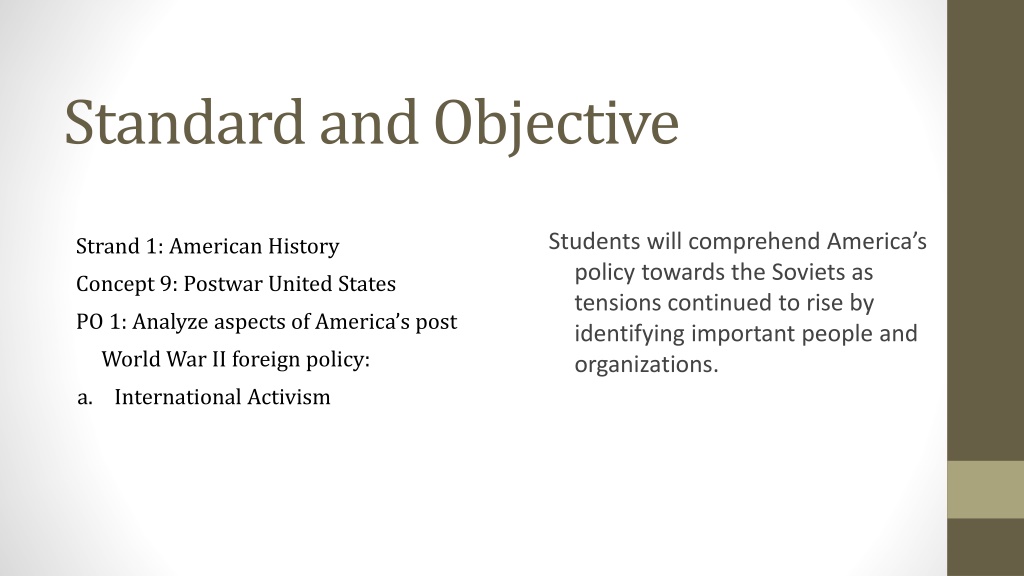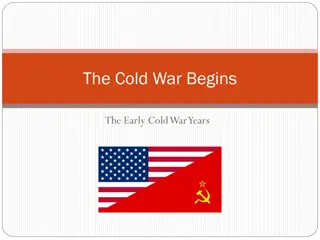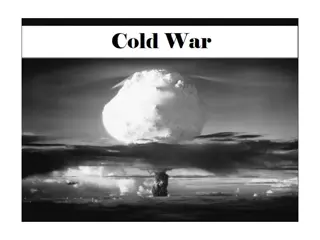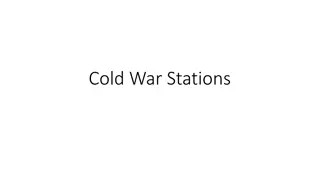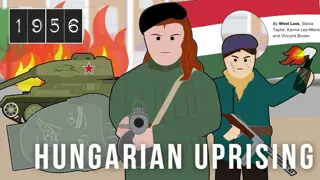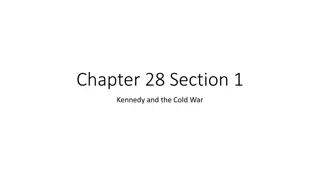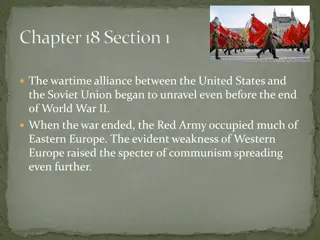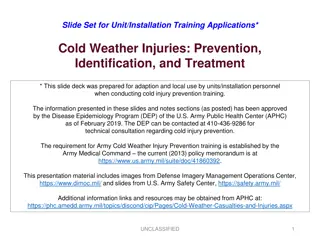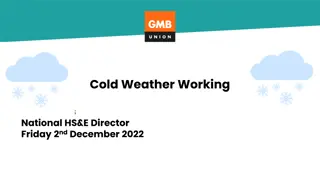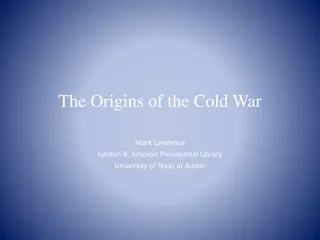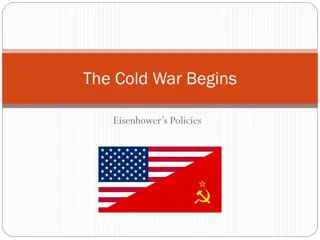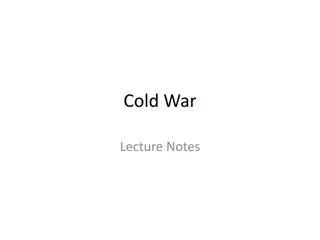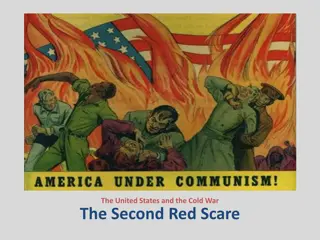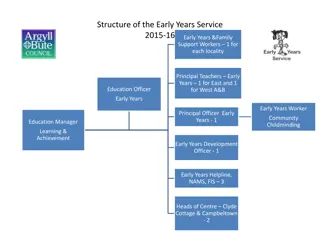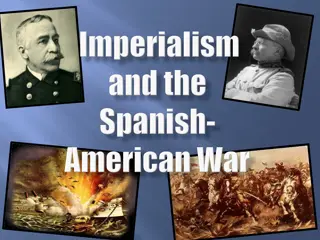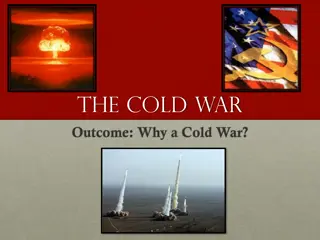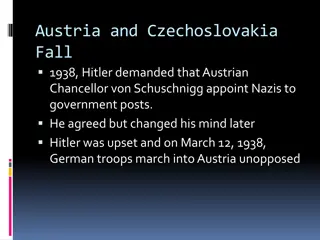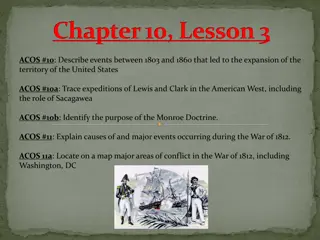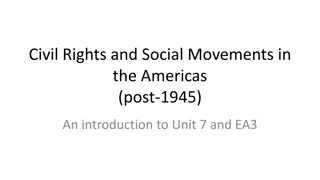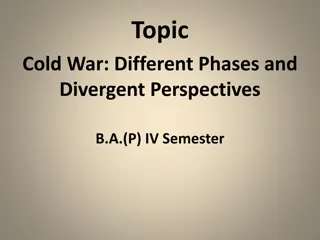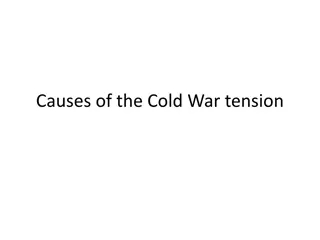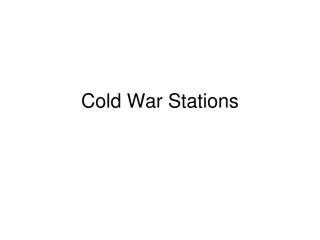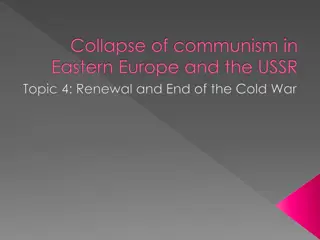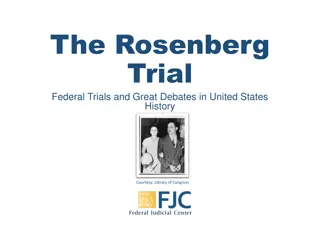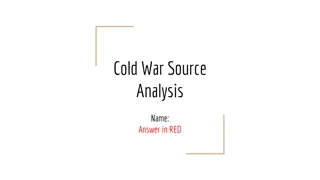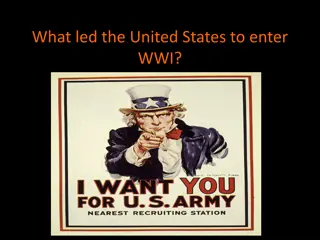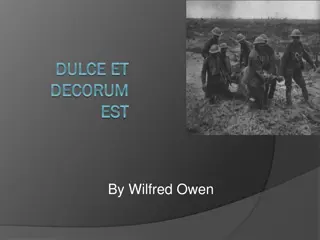America's Policy Towards Soviets in the Early Cold War Years
The early Cold War period saw heightened tensions between America and the Soviets, with key events like the Long Telegram and Crisis in Iran shaping America's containment policy. Diplomat George Kennan's Long Telegram highlighted Soviet insecurity, leading to the policy of containment. Crisis in Iran and Russian Aggression demonstrated Soviet expansionist ambitions, prompting American intervention. The Truman Doctrine further solidified America's stance against communist expansion globally.
Download Presentation

Please find below an Image/Link to download the presentation.
The content on the website is provided AS IS for your information and personal use only. It may not be sold, licensed, or shared on other websites without obtaining consent from the author. Download presentation by click this link. If you encounter any issues during the download, it is possible that the publisher has removed the file from their server.
E N D
Presentation Transcript
Standard and Objective Students will comprehend America s policy towards the Soviets as tensions continued to rise by identifying important people and organizations. Strand 1: American History Concept 9: Postwar United States PO 1: Analyze aspects of America s post World War II foreign policy: a. International Activism
The Early Cold War Years Containing Communism
The Long Telegram The U.S. was getting frustrated with the Soviets refusal to cooperate so they asked the american Embassy in Moscow to explain the behavior Diplomat George Kennan wrote back what became known as the long telegram explaining his views of the Soviets He believed their views came from a traditional Russian sense of insecurity and fear of the West Kennan proposed that America focus on containment, believing that their system was weak and would eventually collapse. The Long Telegram became the basis for the U.S. policy of containment of the Soviet Union
Crisis in Iran First major crisis was in Iran -The U.S. controlled the South Iran and the Soviets controlled the North The Soviets were supposed to withdraw after the war but they didn t, instead, Stalin demanded access to Iran s oil supply and and helped local communists set up a government in the north America saw it as a Soviet push into the Middle East and sent a message demanding that Soviet forces withdraw and also sent in a battleship The Soviets withdrew
Russian Aggresion Stalin wanted to control the Dardanelles since it was of strategic significance to Russia Stalin demanded that Turkey give joint control to Russia Again, this was seen as the Soviet Union attempting to control the Middle East The U.S. sent in an aircraft carrier to help patrol with the battleship
The Truman Doctrine When England could no longer afford to help Greece fight off communist guerrillas, America had to step in Truman went before Congress and asked for $400 million to fight communist aggression in Greece and Turkey His speech outlined a policy that became known as the Truman Doctrine, the goal of which was to fight the spread of communism worldwide
The Marshall Plan Europe was facing a lot of problems after the war -starvation, political chaos, and ruined economies Secretary of State, George Marshall came up with the European Recovery Program better known as the Marshall Plan The plan was to give aid to nations that needed it to rebuild their economies Truman saw this as essential to containment It was offered to the Soviet Union and its satellite nations, but it refused an implemented its own economic program
Lets Review the Objective The students will comprehend America s policy towards the Soviets as tensions continued to rise by identifying important people and organizations. Who was George Kennan and why is he important? What was the Truman Doctrine? What was the Marshall plan and why is it important?
The Berlin Airlift America and the Soviet Union still strongly disagreed about what to do with Germany -Russia wanted heavy reparations The U.S. believed that Russia was trying to undermine the German economy England, France and the U.S. merged their zones and allowed the Germans to have their own government -the Federal Republic of Germany or West Germany They also merged their zones in Berlin creating West Berlin The Soviet Zone became the Democratic Republic or East Germany
The Berlin Airlift With the creation of West Germany, the Soviets realized they were never going to get the reparations they wanted They blockaded West Berlin hoping to force the U.S. to reconsider or to abandon West Berlin Truman didn t back down and sent bombers capable of carrying atomic bombs to bases in Britain He then ordered the air force to fly supplies into Berlin rather than troops The airlift began in June 1948 and continued through the spring of 1949 Brought more than 2 million tons of supplies to the city Stalin finally lifted the blockade on May 12, 1949
The Creation of NATO The Blockade on Berlin convinced many Americans the Soviets were bent on conquest There was increased public support for a military alliance with Western Europe April 1949 and agreement was made to form the North Atlantic Treaty Organization (NATO) which was a mutual defense alliance
NATO and the Warsaw Pact Initially included 12 countries Members agreed to to come to the aid of any other member who was attacked For the first time America was committed to to maintaining peace in Europe Six years after its creation, NATO admitted West Germany alarming the Soviets and prompting them to create an Eastern European military alliance known as the Warsaw Pact
Conclusion What was the Soviet Union s reaction to the Berlin Airlift and NATO? What were the key differences between NATO and the Warsaw Pact? Objective: Students will comprehend America s policy towards the Soviets as tensions continued to rise by identifying important people and organizations.
